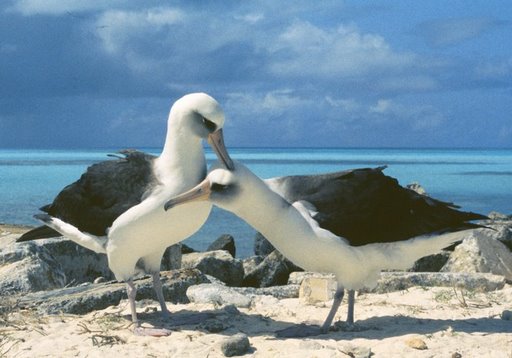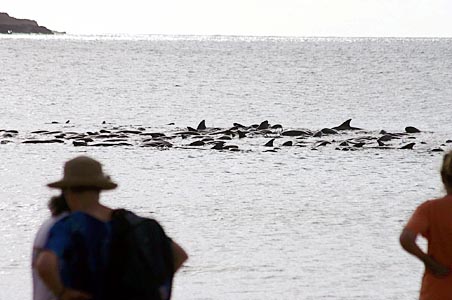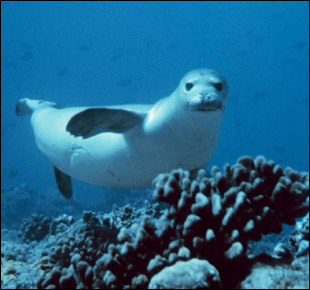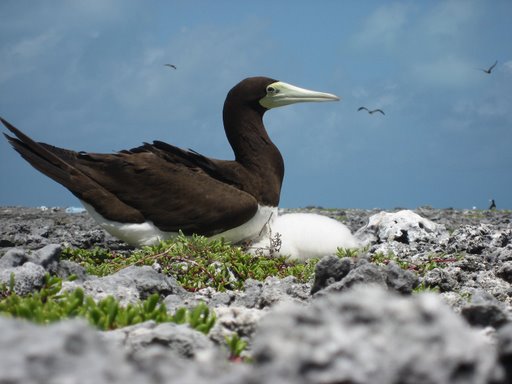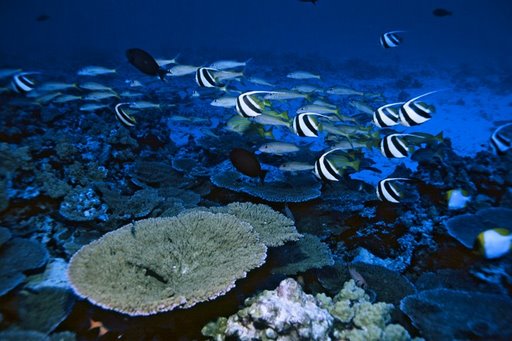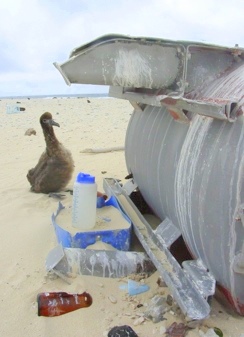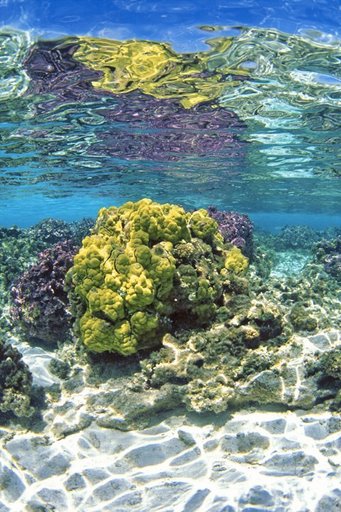Blog
News, updates, finds, stories, and tidbits from staff and community members at KAHEA. Got something to share? Email us at: kahea-alliance@hawaii.rr.com.
Evan in Honolulu Advertiser: concerns persist over NWHI plan!
Evan is our rock star summer intern here at KAHEA, a UH Law Student, and Fellow with the Center for Excellence in Native Hawaiian Law. He has spent much of the last month combing the 1,200 page draft plan for the future of the Northwestern Hawaiian Islands–some of the last intact Hawaiian coral reef on the planet. He has been working along with experts in resource management, science and cultural practice to review, analyze and develop our detailed comments on the draft plan.
From his commentary in the Honolulu Advertiser:
After a two-year multi-agency effort, the public had only 75 days to muster up comments on the four-volume draft. Tomorrow is the deadline [the deadline was recently extended 15 days to July 23] thus far, we have simply not heard from the people.
Among the greatest concerns in the current draft is the abandonment of the “precautionary principle,” which requires biological, cultural and historic resource protection and integrity to be favored when there is a lack of information regarding the potential impacts of any activity.
After the public spoke clearly about their desire to maintain this fragile ocean wilderness as a pu’uhonua (forever sanctuary), this principle was firmly embedded into the presidential proclamation that established the monument.
Instead, this “do no harm” mandate was watered down and replaced with research plans of a questionable nature and vamped-up visitor plans. Even more important, the people have been stripped from the process.
The draft plan fails to mention retaining a public oversight committee. The Reserve Advisory Council played a pivotal role in providing public oversight in the creation of the monument, yet any similar entity has been eliminated.
Other areas where notable improvements can be made include: the need for Native Hawaiian involvement in the leadership and management of the monument; revisions to the permitting process, including renewal and enforcement; prioritizing research around critical conservation needs; the absence of an effective cumulative impact analysis, excessive ecotourism and visitor plans on Midway; and an incomplete and largely unsubstantiated cultural impact assessment.
With time running out, I urge you to visit www.kahea.org to see some of the major concerns that have been outlined by citizens, scientists, environmental advocates and Native Hawaiians who have been diligently parsing the draft proposal.
15 more days to speak up for some of Hawai`i's last intact coral reefs!
Thanks to your strong requests for additional time, government managers have granted an extra 15-days for public comment–moving the final deadline for comments to July 23. It ain’t much, but it is something.
If you’re a member of the KAHEA Action Alert Network, you’ve been seeing alerts on protecting the future of the pristine coral reefs of the Northwestern Hawaiian Islands (also known as the NWHI)… for about a month now.
We’re taking our extra 15 days, and along with thousands of others around the world, we’re asking for a better, stronger management plan. This plan spells out how the NWHI will be protected for the next 15 years.
So we’ll say it again! Without a better plan, we will be opening the Northwestern Hawaiian Islands to :
- Expanded military activities with NO mitigations
- Increased extractive research with NO protection from bioprospecting
- Increased development footprint, and more construction
- Increased vessel traffic
- Cruise ships and increases in permitted tourism
You can support by submitting your own written comments, signing our petition, and spreading the word. Mahalo piha to the thousands who have already supported the call for a better plan!
NWHI Marine Monument Hearings on Oahu TV
From our buddy Oren, who helped us get this public hearing documented and on air:
The video taping of the Honolulu hearing on the Draft Management Plan for The Papahanaumokuakea Marine Monument in the Northwestern Hawaiian Islands held in Honolulu on June 24th will be aired on ‘Olelo Community Television on ch. 52 as well as on its internet website olelo.net–which simultaneously streams ch. 52.
7/3/08 Thu 1:00 pm
7/10/08 Wed Midnight
7/17/08 Wed Midnight
7/24/08 Thu 1:00 pm
In a few days we maybe able to get it on the internet for anyone to watch at any time.
I’d like to thank especially Bill Sager, John Isagawa, Dave Gonzales, Rob Kinslow and the peoples’ at ‘Olelo Community Television —with a lot of their efforts—-, all of whom, who helped to tape this thing together.
Bombs Away! RIMPAC's Back
From Marti:
RIMPAC officially started on Sunday, meaning you can expect beach closures, random explosions, mass strandings, and displays of excessive military force throughout the month of July in Hawaii. Remember, RIMPAC is the bi-annual demonstration of U.S.-occupation that brought us the “Hanalei Bay Incident” in 2004, when 150 melonhead whales attempted to strand themselves because of the Navy’s use of high-intensity active sonar AND the unexplained nearshore explosion that shook the windows of Ewa Beach residents on Oahu in 2006.
This year we can look forward to 150 vessels and 20,000 troops from U.S.-backed militaries — like Russia, South Korea, Australia, Japan, and Peru — engaged in all kinds of wargames, such as assault landings, target practice with live rounds, and high-intensity active sonar.
To move forward with these (and all) exercises as originally outlined in the Navy’s giant range expansion plan, the Navy had to do *something* about the pesky limitations placed on those exercises by the State of Hawaii under the Coastal Zone Management Act (CZMA). This federal law was passed to encourage coastal states to do more to protect their precious coastal resources, including giving these states unique authority to require federal agencies abide by state coastal protections.
Under this unique federal law, the State of Hawaii said the Navy had to do two very reasonable things related to active sonar:
1. In nearshore waters, don’t let the active sonar go above 145 decibels because this is widely accepted (even by the Navy) to be a safe level for marine mammals and humans;
2. In all other situations, abide by the conditions required by Judge Erza in the Federal District Court.
It’s not just that the Navy said “No, we don’t have to follow your stinkin’ coastal protections,” but that the Navy enlisted other government attorneys to say “no” for them in a way that would have undermine all of the cooperative state-federal partnerships set up to protect U.S. coastal resources.
I say “would have” because the legal opinion the Navy ended up with is so poorly argued that it probably won’t have much affect. Of course, it will probably take more court action at some level to sort that out.
The two basic reasons why the Navy’s legal game of Twister fails is:
1. It relies on a court opinion that was vacated, meaning the judge revisited her decision and changed her mind based on new evidence or arguments.
2. The new argument that changed the judge’s mind was that the Endangered Species Act actually says states do, in fact, have the authority to protect endangered marine species to greater extent than the federal government. And it’s well accepted that the Endangered Species Act trumps the Marine Mammal Protection Act when it comes to endangered marine species.
Sigh.
We’ll continue to keep you updated on this saga. In the meantime, you can send your thanks to the State Planning and Director Abbey Mayer for standing up for coastal protections in Hawai`i nei.
Where's the public in this "public process"?
From Evan, law school student and Legal Fellow from the Center for Excellence in Native Hawaiian Law working on staff with KAHEA this summer:
Was thrown into the deep waters of the 1,200 page Papahanaumokuakea Draft Monument Management Plan for the Northwestern Hawaiian Islands this summer. It’s given me a unique opportunity to observe the workings of this “public” process. I’ve worked with experts in reviewing the plan, and attended several of the public hearings set up by the State/Federal Co-Trustee agencies. My observation: It is a recipe for disaster to take two years of closed door processes, package it into 4 very thick volumes and then expect the public at large to comment in any detail about what the plan entails. 
(This is what 700 pages of the 1,200 page plan looks like. Erm, fun.)
I first attended the hearing at the Department of the Interior in Washington D.C. (the only hearing held outside our lovely archipelago). I was quickly made aware of the fact that I would be the only person offering public testimony. So much for the public in this public hearing.
After giving an impassioned 20 minute explanation of KAHEAʻs overarching concerns, I was flooded with a steady stream of “How do you do’s?” and “Can we get a copy of your testimony?” from interested national NGO’s and congressional staffers. I was glad for the opportunity to get the word out on our key concerns, despite the dismal showing of public engagement.
The next chance I had to attend was the final night of the Federal/State Co-Trustee Island Summer Hearings Tour 2008. From all accounts, the crowd of about 60 at the Japanese Cultural Center in Moilili was by far the largest of any of the meetings. The format was a little different from D.C. and to be honest, quite unlike anything I had ever witnessed before. After a formal introduction to the Monument (same as D.C.), was an open discussion with Monument staff who were broken into 6 tables that synchronized with 6 priority management needs from the plan. It had an element of “spoon-feeding” to it, and considering that many had come to supply public testimony, made things run a little later than they may have otherwise. Nonetheless, I found this segue to be a nice opportunity to bring some of my major gripes with the plan directly to the folks who had put it together.
Over the course of this experience, I have been amazed at the bizarre nature of this top-down “public” process.
When asked: “Why was the citizen’s advisory council removed from the plan?”
A rep responded: “Actually, we do want one. We left it out because we wanted to see what the public would come up with during the review period.”
I’d suggest that a proper, engaged public process wouldn’t have waited until the review period to see what the “the public would come up with.” It all reminded me of the hide the ball game my law professors sometimes like to play. Except this is not law school. Why intentionally leave something as important as public oversight and advisory committees out of the plan, on purpose? Something as important as the Monument surely deserves better!
All told, the nine public meetings yielded about 250 total attendees and 70 testifiers. Not exactly up to par with the 100,000+ comments that helped create the Monument. Essentially, there was very little public at in these public meetings.
It is the job of the government managers to engage the public in this process–to bring the place and the process to the people. The length of time since the Co-Trustees have seen daylight, coupled with the sheer magnitude of the plan are likely culprits for this erosion of public engagement. I simply cannot accept that after previous outpourings of energy, suddenly nobody cares enough about this place to speak out. Another likely reality involves the seventy five day open period for submitting comments, which is rapidly coming to a close on July 8th. Compared to the two years it took countless full time staff to develop the plan, 75 days is simply too short a time to garner the effective and real public involvement needed to protect this special place.
This is one of the truly intact Hawaiian reef ecosystems left on earth–precious cultural and natural heritage that deserves our attention and voices. You can learn more about problems with the current plan, and how to ask for a better process and more time to get the “public” involved at: www.kahea.org.
enforcement means everybody, folks.
From Miwa:
On June 13, the Hawai`i Board of Land and Natural Resources quietly denied the permit of HIMB disease researcher Greta Aeby, in the closing chapter of a historic enforcement action for the Northwestern Hawaiian Islands. Aeby was reported in 2006 by fellow researchers to be transporting potentially diseased coral shipboard in an open-flow system–a clear violation of her research permit.
After initially contesting the violation, she and HIMB finally accepted the enforcement action earlier this year. (But only after third-party legal intervention by us at KAHEA!) She remains under investigation for other violations related to illegal disease cultivation and importation.
We have taken some heat for standing up and urging the full enforcement of the law for this HIMB researcher. Do we hate HIMB? Do we hate researchers? Absolutely not. There are plenty of good people who work at HIMB, many of whom are our friends.
What we ARE saying is that no matter who you are, the rules apply. HIMB researchers, commercial and recreational fishers–all the same. The protective rules are in place for good reason, rules for which many people fought incredibly hard. Through many years, and sometimes at great personal expense, they fought to protect this place as an intact natural and cultural legacy for future generations. This is about responsibility and it is about respect. Responsible research is about respect for the resource and respect for the people to whom the resource ultimately belongs.
Thanks to the participation of over 100,000 members of the public, the Northwestern Hawaiian Islands are today protected as the largest no-take marine reserve on the planet. Permits are required to access the area, and research permits in particular, are considered a privilege for those researchers who are contributing directly to conservation of the area and can conduct their activities responsibly–with little to no impact. This is because our policies and rules in Hawai`i recognize that irresponsibly conducted research poses serious risks and can cause serious harms.
We commend the BLNR for upholding the rules in place to protect the Northwestern Hawaiian Islands. Through strong rules and strong enforcement, we can continue to keep this place as a true pu`uohonua. Forever.
We live in the endangered species capitol of the planet, islands impacted heavily by the onslaught of invasive species and the impacts of climate change on our Hawaiian reefs. In the face of all this, we believe that for this one, last intact and pristine Hawaiian place, we can act together to do the right thing.
conservation plan = more impacts? we don't get it.
A short video we put together on the new draft of a 15-year plan for the future of the Northwestern Hawaiian Islands.* We’ve read all 1,200 pages of it, and reviewed it with experts everywhere from Sierra Club to Environmental Defense. Our conclusion? We can do much, much better.
Now, we’re seeking signatures on a petition asking for a better, stronger Plan for this fragile wahi pana.
The current draft is a plan for conservation which, inexplicably, actually expands the footprint of human activity in this pristine and uniquely Hawaiian coral reef ecosystem.
In the largest no-take marine reserve on the planet, this draft of the Federal/State plan is proposing the construction of a “small municipality” on Midway, new cruise ships, more tourists, increases in extractive research, new risks of invasive species introductions, exemptions for fishing, and opening of the area to bioprospecting. An expansion of military activities–including sonar, ballistic missile interceptions, and chemical warfare simulations–would be allowed to go forward with no mitigations. The plan also disbands the existing citizen advisory council, which is pretty much the only opportunity for members of the public (non-government scientists, advocates, cultural practitioners, and resource experts) to participate in decision-making. Yeesh.
Over 100,000 people from all over the world helped establish the Papahanaumokuakea National Marine Monument and the Hawaii State NWHI Refuge–perhaps the most visionary legal marine area protections in history. We need to ask government managers for a plan which upholds these strong protections. We should be working towards full conservation, NOT creating and formalizing exceptions to the rules. That’s our position, anyway.
If you agree, please take a few seconds to add your name to the petition. This last intact, endangered and uniquely Hawaiian coral reef ecosystem deserves a plan for its FULL conservation. Unless we show broad public support, protections we fought so hard for will be paper, not practice.
*The hearings mentioned in the video are over, but there is still one week left to make your voice heard. More information at www.kahea.org. Deadline is July 8, 2008.

